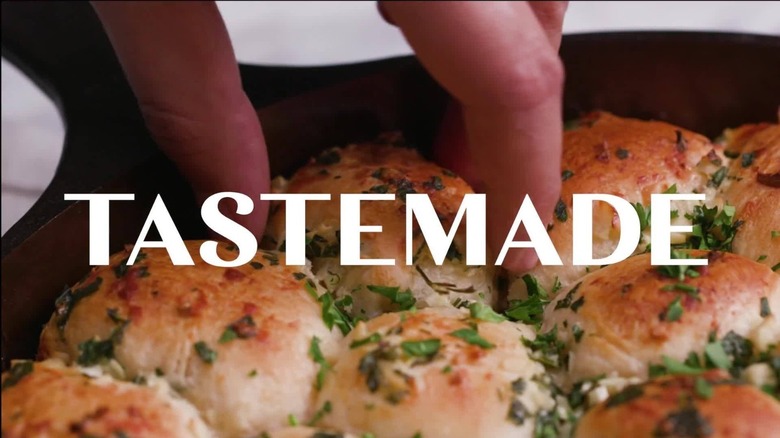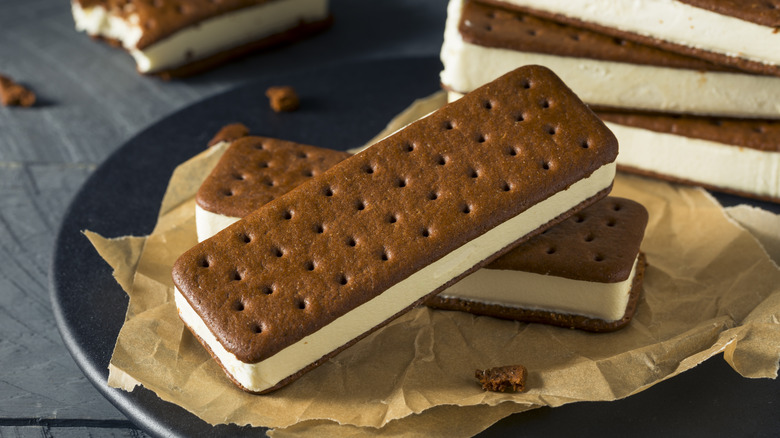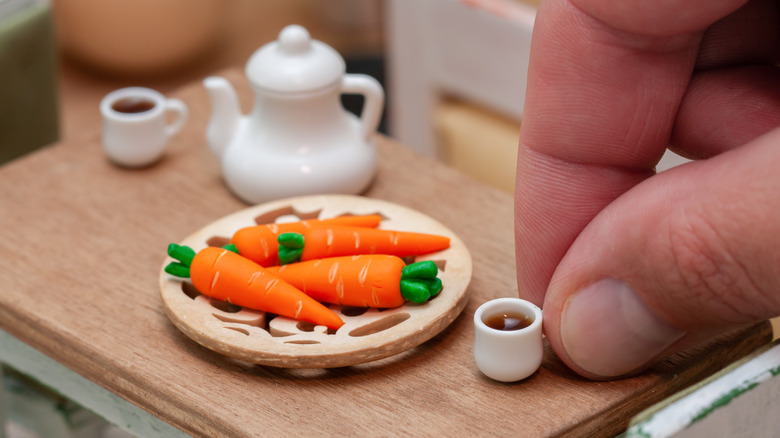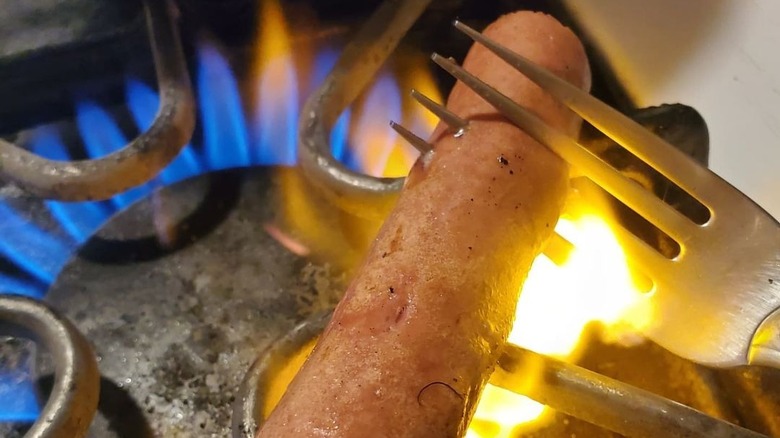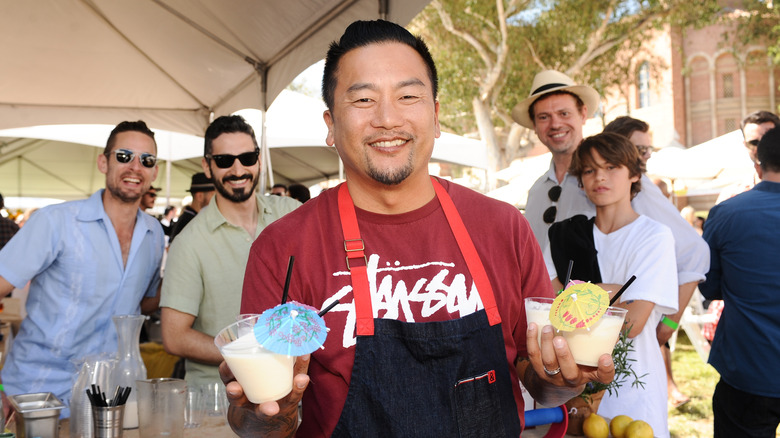The Untold Truth Of Tastemade
If you've been on social media any time in the last few years, you've probably heard of Tastemade -– a self-described "modern media company ... garnering 700 million minutes watched per month." From tiny pancakes cooked in a tiny kitchen to a milkshake how-to with 3 million views, Tastemade cranks out quality food content like it's their job –- because, well, it is.
In fact, it does that job so well that it's racked up more than 300 million active viewers, including more than 1 million YouTube subscribers and 7 million Instagram followers. It even inspired its own hashtag, #Tastemademedoit. Give it a quick search and you'll be greeted with over 170 thousand attempts at recreating mouth-watering Tastemade recipes at home.
But what exactly does "a modern media company for the millennial consumer" mean, and how did Tastemade go from start-up to mega media mogul? We're diving into that 10-year journey and all the fun twists, turns, and milkshakes along the way.
Tastemade's founders have deep media chops
Any good origin story starts with a company's founders, and Tastemade has three: Larry Fitzgibbon, Joe Perez, and Steven Kydd. To say they have deep media experience between them would be putting it lightly –- from The Daily Plate to the parent company of Myspace, their combined experience over the years means they started this venture with no shortage of media know-how. All three were also founding members of Demand Media, now Leaf Group, the content company behind eHow and livestrong.com that Variety reports briefly passed the New York Times Co. in valuation in 2011.
The three men took everything they learned at Demand Media and beyond and started Tastemade in June 2012 (via Money Inc). In an interview with Vox, Fitzgibbon explains how they saw audiences shifting to new platforms, most notably from traditional television to mobile platforms, and identified a need to reach consumers where they are, with the quality food content they want. What resulted was an online platform that created exactly what people were looking for and put it exactly where they were looking (primarily on their phones) in a mobile-friendly format.
Tastemade was born on YouTube
Since Tastemade is built around online video, it only makes sense that it began on YouTube -– especially considering it launched in 2012, before other content platforms like Instagram and Snapchat had really taken off (via Entrepreneur). While food videos certainly existed on YouTube prior to the arrival of Tastemade, it was one of the first to approach food video as its own category, as reported by Vox.
While Tastemade still has its own successful YouTube channels, Variety notes its videos now stream on dozens of other platforms, as well, from Apple TV and Hulu to Amazon Prime Video and Roku. And, the Tastemade streaming network has a whole host of series to fill those platforms, including innovative brand partnership series like "Mad Good Food," "Broken Bread," "Frankie vs. the Internet," and "Heritage." The latter series even won a People's Choice Webby Award for Best Documentary, a testament to Tastemade's ability to create content that resonates.
Tastemade has also branched into live videos. In his Vox interview, Fitzgibbons talked about Facebook Live episodes that attract up to 100,000 people watching at once. In many ways, Tastemade has discovered a formula that's largely repeatable and based on fun, engaging concepts that reel people in –- for example unexpected, novel concepts like a latte art class or a pancake art class. The most-requested piece of latte art? An image of rapper Tupac's face in your coffee, of course. Tastemade knows what works and they leverage it.
An ice cream sandwich milkshake put Tastemade on the map
Speaking of knowing what works, one of Tastemade's early successes, one that Decider labels its big breakthrough, was a milkshake how-to with more than 3 million views on YouTube. Why is it so popular? It's tailor-made for social media success. Indulgent, hack-y, and super simple, the "Slacker Shake" was part of Tastemade's "Thirsty For..." series (which they've since done away with) and calls for seven ice cream sandwiches (yes, seven ice cream sandwiches), one cup of milk, and momentary amnesia around the concept of calories.
Nutrition info aside, the shake was a hit. One YouTube commenter wished for a bathtub full of the decadent treat and another claimed they've made the treat 50 times (and still can't get enough!). And the ingredients weren't the only thing inspiring comments – viewers also complimented Tastemade's video style, with comments like "your videos are fantastic, and the music works great" and "I absolutely love the way these videos are made! Thumbs up!". It seems Tastemade has been doing it right from the get-go, a foreshadowing of their future success.
Goldman Sachs is an investor
A big part of making a start-up successful (or at least something we imagine makes it exponentially easier) is having investors with capital. Tastemade has quite a few and they aren't all expected, or even in the food space. In fact, Goldman Sachs became an investor in 2015, helping to create a pool of $80 million in series D funding (via Money Inc).
In case you're wondering what series D funding is, here's a very abbreviated lesson in start-up capital. As Startups.com explains, there are typically several rounds of investment, starting with angel or pre-seed investors (friends, family, etc.) at the very beginning, when proof of concept is still being developed, and progressing through series A, B, C, D, and potentially E funding as the company grows. Series D funding comes about when a company is already up and running and needs an extra boost to expand or increase its value before going public.
Tastemade has other investors, as well, and they aren't small names. Amazon, Scripps Network (the owner of Food Network), Comcast Ventures, and more have recognized Tastemade's potential and contributed a combined $115 million in funding since its founding in 2012 (via Variety).
Tastemade has a Santa Monica kitchen specifically built for shooting vertical videos
In an interview with Vox, co-founder Larry Fitzgibbon estimated 80% of Tastemade's video viewership happens on a cell phone. And if our phones' weekly screen time reports are any indication, we're all very familiar with the fact that the best mobile videos are vertical videos. In fact, as The Washington Post reports, the average adult spends around 3 ½ hours a day using the Internet on their phones, but many spend twice that and more. That's a lot of time for video viewing!
Since creating top-quality content that's easy to consume is Tastemade's name of the game, it only makes sense that it would laser focus on how to create the best vertical videos around. As reported by Entrepreneur, the company even built a kitchen in their 7,000-square-foot Santa Monica studio that's set up to shoot vertically oriented videos, as well as long-form programming in 4K for streaming and social platforms.
Speaking of studios, Tastemade now has them around the world, from Paris to Tokyo and Sao Paulo to Buenos Aires –- a reflection of its diverse viewership from more than 200 countries across the globe. It also launched its first Spanish language-streaming channel during Hispanic Heritage Month in 2020, available to more than 62 million households across the country (via Forbes).
Tiny Kitchen is one of Tastemade's claims to fame
If your Instagram explore tab is as food-centric as ours, you've probably stopped your scroll to watch, mesmerized, as a pair of human hands deftly whips up some mini cupcakes or a two-tiered wedding cake shorter than your pinky finger. If so, you can thank Tastemade for that, too. You've discovered "Tiny Kitchen," an oddly addicting series that started as a bit of a joke.
According to CBS News, Jay Holzer, Tastemade's head of development and production, got his daughter a new dollhouse for Christmas and needed a way to get rid of her old one. Naturally, he brought it to the Tastemade studio. And what do a bunch of content-obsessed foodies see when they look at a dollhouse? The opportunity to make a tiny kitchen, of course. So, that's exactly what they did, and with a tiny burger, tiny plate of spaghetti, and tiny stack of pancakes the first "Tiny Kitchen" set was born.
And while it might be hard to believe, all the food is real! Tastemade's tiny foods are actually edible and made on tiny, functioning appliances. CBS News visited its studio and watched as a food stylist mixed up the precise combination of ingredients to make a tiny donut — an itty-bitty quail egg mixed with a dash of flour and milk -– and deep-fried it on a tiny stove heated by a tiny candle. If you're looking for some entertainment, check out "Tiny Kitchen Cook Offs" to watch celebs attempt to recreate this intricate process themselves.
Tastemade Struggle Meals was inspired by a hashtag
Even if you haven't heard the term "struggle meal," you've almost certainly made one. Struggle meals are those meals you make when your fridge and cabinets are almost empty and you're low on cash. Foodbeast rounded up a list when the hashtag #strugglemeals first started trending in 2017, and submissions ranged from a single cold hotdog to milk toast (which is exactly what it sounds like -– bread served in milk or with milk poured over the top that Allrecipes says could date back to the Middle Ages).
When Tastemade wanted to create a series around the phrase, they thought of Frankie Celenza, a former NYU college student who found YouTube fame cooking up cheap, but delicious, meals. Tastemade saw his videos, asked if he'd like to get involved and the rest, as they say, is history! Tastemade "Struggle Meals" was born.
Fast forward to 2020 and we're in the midst of a global pandemic with grocery shortages leaving many of us, you guessed it, with our fridges and cabinets almost empty and less money to spend on food. We all needed struggle meals, and Celenza's series exploded in popularity (he once went to the grocery store with just $3 in his pocket). So many people tuned in that Tastemade decided to take the series global with local-language versions in Latin America, as reported by LA Times.
Tastemade has two James Beard Awards
Tastemade creates such high-quality culinary content that it has three James Beard Awards, awards that recognize "exceptional talent and achievement in the culinary arts, hospitality, media, and broader food system." It announced the first in 2014 for its "Thirsty For..." series, the same series that gave us the Slacker Shake. Beyond artfully styled milkshakes made with a bunch of ice cream sandwiches, though, the series exposed viewers to drink recipes from around the world, from a Mexican champurrado hot chocolate to a Middle Eastern loomi tea.
The second award was for the show "Uncharted" and its most recent was for Roy Choi's series "Broken Bread," which PBS SoCal notes launched in 2019. Choi is an LA-based chef who got his start selling delicious tacos from a food truck and has since been named Best New Chef by Food & Wine magazine, become a New York Times bestseller, made the TIME 100 list of "Most Influential People in the World," and starred in a Netflix series alongside Jon Favreau. Broken Bread leans into social justice activism and follows Choi throughout his hometown as he discovers people and organizations that use food as a positive platform to challenge the status quo.
The media outlet branched into travel and home, too
Once Tastemade got food videos down pat, they branched into two more categories, launching Tastemade Travel and Tastemade Home across Facebook, Instagram, YouTube, Snapchat, AppleTV, and its other streaming platforms in 2017 (via Digiday). While these might seem like three unrelated verticals at first glance, they're really quite intricately linked. Trying new and exciting foods is a huge part of travel, and we'd argue that the kitchen is the most important room of a home.
Tastemade Travel even became its own separate streaming network in November 2021, launching on Samsung TV Plus, Redbox, VIZIO WatchFree+ and IMDb TV, to reach 80 million households across the U.S, with additional platforms to come (via The Hollywood Reporter). The network will stream shows like "Luke Nguyen's Street Food Asia," "Into the Outback with Abbey," "Gourmet Goes Tribal," and more. Perfect timing as travel remains challenging and we look for ways to satisfy our wanderlust at home.
And circling back on that milk toast (what, you weren't still thinking about it, too?), check out this recipe for a struggle meal that's easy to get behind –- just in case you find yourself spending some extra time at home in the next few weeks.
